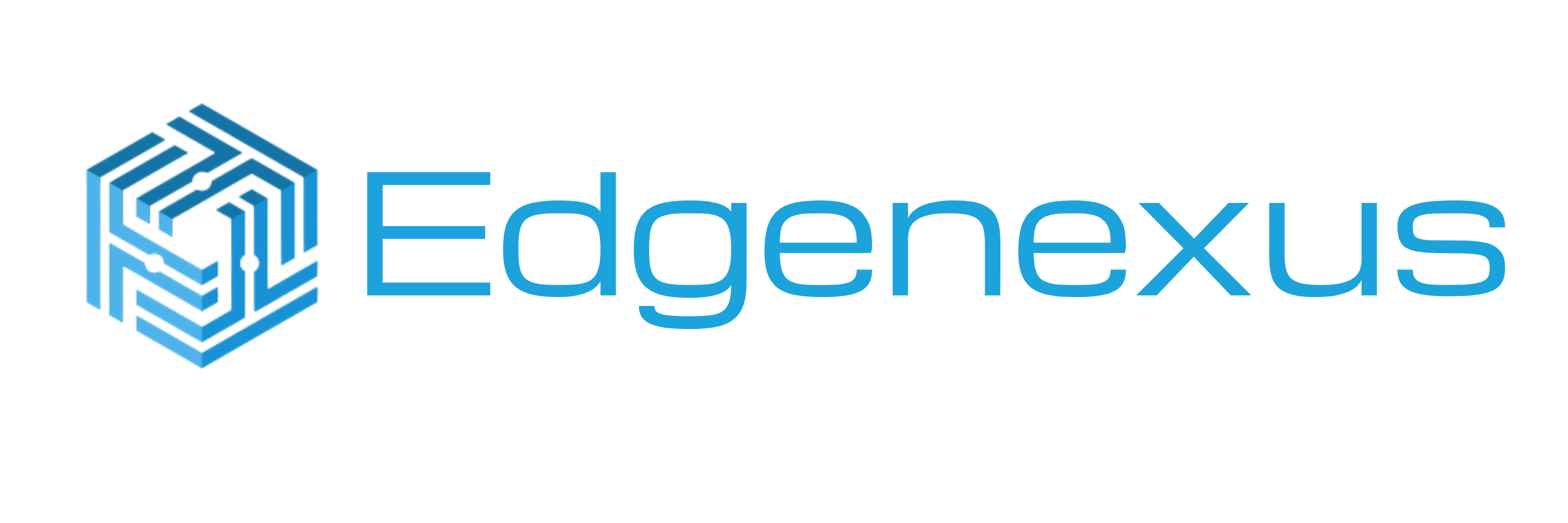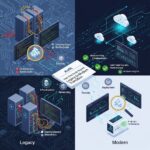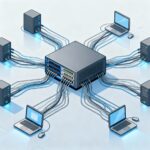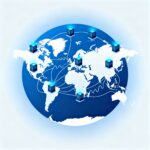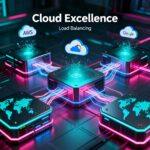I. The Breaking Point: Why Enterprise IT is Ditching Legacy ADCs
For decades, the Application Delivery Controller (ADC) market was dominated by a handful of established giants. Citrix Netscaler (now Citrix ADC) was one of the most prominent, a complex powerhouse essential for delivering applications across the enterprise, especially for organizations reliant on Citrix Virtual Apps and Desktops.
However, the rapid shift to multi-cloud, DevOps pipelines, and subscription-based IT models has exposed the fundamental flaws in the legacy ADC blueprint. Enterprises today, from global corporations to nimble Managed Service Providers (MSPs), are burdened by a platform built for a bygone era.
The decision to stay with Citrix Netscaler is no longer a path of least resistance; it is a strategic liability defined by high costs, operational rigidity, and an escalating need for highly specialized (and expensive) expertise. The true cost of ownership often extends far beyond the license fee, encompassing costly training, professional services, and the time wasted troubleshooting complex configurations.
This is the breaking point. The market is demanding a modern, agile, and cost-effective alternative. Edgenexus Application Delivery Controller (ADC) is leading this charge, offering a direct, powerful, and vastly simpler migration path that redefines application delivery for the cloud era. It’s not just a replacement; it’s a commitment to an agile, future-proof infrastructure.
II. The Core Problems with the Netscaler Legacy Model
For IT leaders currently maintaining a Citrix Netscaler environment, the frustrations are tangible and frequently boil down to three pillars: Complexity, Cost, and Rigidity.
The Licensing and Total Cost of Ownership (TCO) Trap
The most immediate pain point for many enterprises is financial. Citrix’s complex licensing structure and recent aggressive push toward mandatory subscription models have made budgeting unpredictable and expensive.
- Subscription Shock: The forced move away from perpetual licenses and the end-of-sale for perpetually licensed hardware (MPX, SDX) have led to unavoidable, significant price hikes. Organizations find themselves locked into expensive, multi-year contracts with no clear ROI benefit outside of maintaining the status quo.
- Hidden Costs of Specialization: Netscaler’s complexity necessitates highly specialized, certified engineers. When internal teams lack this deep expertise, organizations are forced to rely on expensive third-party consultants or professional services for everything from initial deployment to critical configuration changes. These consulting fees become a perpetual operational cost, vastly inflating the true TCO.
- Feature Bloat and Over-Provisioning:Netscaler is a monolithic platform. Enterprises often pay for a vast suite of features (high-end hardware, complex security tools, deep Citrix VDI integration) when they only utilize the core Load Balancing, SSL Offload, and WAF capabilities. This “paying for what you don’t use” model is incompatible with modern, lean IT budgeting.
The Operational Complexity and CLI Dependency
Netscaler’s configuration model is steeped in a legacy command-line interface (CLI) approach, often requiring intricate scripting or specialized policy languages for seemingly simple tasks.
- Proprietary Scripting Barrier:Advanced traffic manipulation, such as content switching based on specific URLs or header rewrites, a fundamental requirement for modernization projects, often necessitates writing complex n-code or proprietary policy expressions. This creates a single point of failure, slows down deployment cycles, and makes infrastructure changes a high-risk activity managed by a tiny group of experts.
- WAF Management Headaches:Configuring the Netscaler Web Application Firewall (WAF) can be a multi-step, often cumbersome process involving detailed policy expression language, complex relaxation rules, and prolonged “learning” modes, making it difficult for compliance officers to quickly implement and audit security controls.
- Rigidity for DevOps:The complexity of the configuration makes it difficult to integrate Netscaler effectively into modern, automated DevOps or CI/CD pipelines. Teams focused on application agility are constantly bottlenecked by a networking layer that demands specialized manual intervention.
III. The Modern Alternative: Introducing Edgenexus
Edgenexus was conceived as a reaction to the complexity and cost of legacy ADCs like Netscaler. The design philosophy is simple: deliver enterprise-grade power with unprecedented simplicity, intuitive management, and transparent value.
Simplicity as a Strategic Tool
For IT leaders, simplicity is not a convenience; it’s a strategic cost-saver. Edgenexus achieves this through a focus on usability:
- Intuitive GUI-First Approach: The platform’s next-generation GUI is designed for manageability by generalist IT staff, significantly reducing the learning curve and the reliance on specialist consultants. Changes that took hours of scripting on Netscaler can often be executed in minutes via the Edgenexus interface.
- Flexible and Cost-Effective Licensing: Edgenexus offers a straightforward, transparent licensing model that significantly cuts down on the Total Cost of Ownership (TCO). Customers frequently report savings exceeding 60% on licensing and support fees compared to their legacy agreements.
Built for the Hybrid Cloud
Unlike Netscaler, which was designed primarily for the data center and later adapted for the cloud, Edgenexus is inherently cloud-agnostic and flexible:
- Universal Deployment: It runs seamlessly as a virtual appliance on all major hypervisors (VMware, Hyper-V, KVM) and in all major public clouds (AWS, Azure, GCP), supporting a true hybrid or multi-cloud application delivery strategy.
- Integrated Global Server Load Balancing (GSLB): Built-in GSLB functionality ensures business continuity and disaster recovery across disparate geographical locations and cloud environments, a crucial component that often comes with complex add-ons in legacy solutions.
IV. Edgenexus Feature-by-Feature Migration Advantage
The true difference is seen in the core tools that drive application delivery and security. Edgenexus replaces the complexity of Netscaler with purpose-built, intuitive toolsets.
1. The flightPATH Engine: No-Code Traffic Brilliance
The Netscaler Problem: Complex traffic routing, header modification, and content switching require learning proprietary policy languages, resulting in rigid, high-risk configurations.
The Edgenexus Solution: flightPATH is the heart of the Edgenexus ADC. It is a powerful, visual, zero-coding Layer 7 policy engine.
- Rapid Deployment: IT managers can create sophisticated rules, such as redirecting traffic based on the source URL, HTTP headers, or cookies, using a graphical interface. This eliminates the need for expensive, specialized scripting talent and accelerates deployment cycles for new applications.
- Migration Accelerator: During a platform modernization project, flightPATH is essential. It allows administrators to dynamically route a percentage of traffic to a new server cluster (e.g., a gradual rollout of a new application version) or steer traffic based on specific user attributes, all without service interruption.
2. Integrated Web Application Firewall (EdgeWAF)
The Netscaler Problem: WAF configuration is often difficult, involving multiple steps, profile settings, and deep customization that can slow down deployment and compliance efforts.
The Edgenexus Solution: EdgeWAF is fully integrated and designed for immediate impact and simplified compliance.
- OWASP Top 10 Protection: The EdgeWAF provides robust, out-of-the-box protection against common threats like SQL injection and Cross-Site Scripting (XSS), making compliance with standards like PCI-DSS more straightforward.
- Simplified Management: Security policies are configured directly within the Edgenexus GUI, ensuring that WAF controls are managed alongside load balancing rules, streamlining the entire security posture without adding layer complexity.
3. Resilience and Operational Ease
The Netscaler Problem: High availability (HA) and health monitoring often require detailed setup and can be prone to “split-brain” scenarios or overly complex health checks.
The Edgenexus Solution: The platform emphasizes robust resilience and ease of maintenance.
- Intelligent Health Checks: Edgenexus supports granular, programmable health checks at the application layer, ensuring traffic is only routed to genuinely responsive backend servers, going beyond simple ICMP pings.
- Reduced Patching Overhead: Designed for simplicity, the platform typically requires less frequent, less disruptive maintenance than legacy monolithic ADCs, leading to a higher application uptime.
V. Strategic Advantages for a Modern Enterprise
The migration from Netscaler to Edgenexus is more than just a component swap; it’s a strategic choice that enables future IT initiatives.
For Managed Service Providers (MSPs)
Edgenexus offers MSPs a crucial competitive advantage:
- Profitability: The lower TCO and simplified management mean MSPs can deliver enterprise-grade ADC services to their clients at a much better margin than they could with expensive legacy solutions.
- Multi-Tenancy: The architecture supports flexible multi-tenant environments, allowing MSPs to provision and manage distinct ADC services for various clients easily and securely from a unified platform.
For DevOps and Application Agility
By eliminating the scripting barrier, Edgenexus gives control back to the application team. Configuration changes are fast, visual, and less risky, directly supporting faster deployment cycles and modern agile development methodologies. The simple API allows for straightforward automation and orchestration.
For Future-Proofing Infrastructure
The platform’s design is inherently scalable and adaptable. As your organization moves toward containerization or microservices, Edgenexus can evolve to meet those needs without necessitating another expensive and disruptive forklift upgrade, ensuring the ADC layer remains an accelerator, not a bottleneck.
VI. Conclusion
The time for IT leaders to break free from the constraints of legacy Application Delivery Controllers is now. Citrix Netscaler, while historically powerful, has become synonymous with unnecessary complexity, specialist reliance, and unpredictable costs.
Edgenexus offers a clean, powerful, and economically sound migration path. By leveraging zero-coding tools like flightPATH and a robust, integrated EdgeWAF, enterprises can immediately simplify operations, dramatically reduce TCO, and empower their IT teams to deliver applications with greater agility and security. The smarter, simpler choice is clear: migrate to Edgenexus and future-proof your application delivery infrastructure.
FAQs on Migrating from Citrix Netscaler to Edgenexus ADC
1. What is the primary financial incentive for enterprises to migrate away from Citrix Netscaler?
The primary incentive is the significant reduction in Total Cost of Ownership (TCO). This is achieved by escaping Netscaler’s high licensing costs, particularly its mandatory subscription models, and eliminating the need for expensive, specialized Netscaler consultants and training required for complex configurations.
2. How does Edgenexus solve the complexity issues inherent in Netscaler’s configuration and management?
Edgenexus features an intuitive, next-generation GUI and the flightPATH engine. This engine allows IT generalists to create and manage advanced Layer 7 traffic rules, header modifications, and content switching through a visual, zero-coding interface, eliminating the reliance on complex, proprietary scripting languages (like n-code).
3. Is Edgenexus a suitable replacement if my organization heavily relies on Citrix Gateway (ICA Proxy) functionality?
No. Edgenexus is a pure Application Delivery Controller (ADC) focused on load balancing and web security. If your Netscaler deployment is primarily used as a Citrix Gateway (ICA Proxy) for VDI access (Citrix Virtual Apps and Desktops), you must retain the Citrix Gateway or migrate that specific functionality to a dedicated VDI solution.
4. How does the Edgenexus WAF compare to the security modules in Netscaler?
Edgenexus includes a fully integrated EdgeWAF that protects against the OWASP Top 10 threats and ensures simplified PCI-DSS compliance. It is managed directly within the user-friendly GUI, offering comparable enterprise protection without the complexity and steep learning curve often associated with legacy WAF configuration.
5. How is the transition of complex traffic routing policies handled during migration?
Complex traffic routing policies from Netscaler are translated into visual rules using the flightPATH engine. This zero-coding approach allows IT teams to rapidly replicate or improve complex content switching, URL redirection, and header manipulation policies without the high risk and time investment of manual scripting.
6. Does Edgenexus support multi-cloud and hybrid environments like Netscaler?
Yes. Edgenexus is inherently cloud-agnostic, supporting deployment on-premises (VMs) and natively in public clouds (AWS, Azure, GCP). It includes Global Server Load Balancing (GSLB) to provide essential disaster recovery and high-availability across multiple geographical data centers and cloud regions.
7. How does the migration benefit MSPs (Managed Service Providers)?
For MSPs, the move means higher profitability and greater agility. The lower licensing costs and simpler management allow them to offer competitive, enterprise-grade ADC services to their clients with better margins and less reliance on specialized, expensive Netscaler expertise.
8. Will my DevOps team find Edgenexus easier to automate and integrate into CI/CD pipelines?
Yes. The simpler architecture and clean API of Edgenexus facilitate easier integration and orchestration compared to legacy ADCs. The elimination of proprietary scripting removes a major operational bottleneck, allowing for faster, safer automation of application delivery tasks.
9. What kind of support does Edgenexus offer during the actual migration process?
Edgenexus typically provides expert support to guide the migration. Their support teams help IT staff translate existing configuration logic into the Edgenexus environment, ensuring a rapid, low-risk cutover, often reporting the entire process can take less than a day for core functionalities.
10. By moving to Edgenexus, am I sacrificing high availability or performance?
No. Edgenexus is designed to deliver enterprise-grade performance and resilience. It supports seamless Active-Active/Active-Passive clustering and uses advanced, application-aware health monitoring to guarantee application uptime, ensuring you maintain mission-critical performance without the legacy cost.
